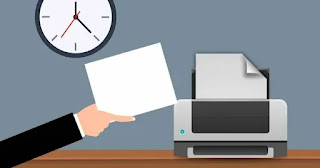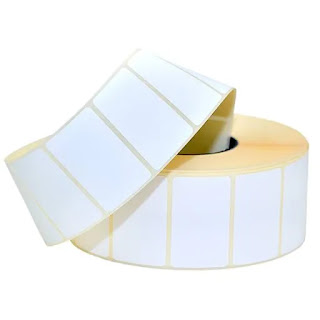How to choose the best type of paper for your print job
Printing tasks require different types of paper, whether it's a simple office notecard, a business card, or an eye-catching brochure to wow your customers. White inkjet paper is adequate for most print jobs, but some projects, particularly those delivered to clients, necessitate the use of special printing paper with a glossy finish or heavy-duty thickness.
Types of Printer Paper
Understanding the various types of printer paper will assist you in making your projects look their best. Then, to find the best paper for any project, consult our finish and paper weight guide same way. Find the best paper for the job before deciding on the finish and weight for your project. The most common types are as follows:
Cardstock :
Cardstock printer paper is thicker than regular paper. Because of its thickness and durability, it is frequently used to make paper menus, postcards, and invitations. Depending on the project, cardstock can be coated or uncoated.
Cardboard:
Made from unbleached wood pulp, cardboard has two smooth outer layers and one corrugated inner layer. It's a tough choice for shipping materials and tasks where toughness trumps looks.
Foam Board :
Foam board, also known as foam core, is made up of a polystyrene core sandwiched between two layers of paper. Foam board is a popular choice among business professionals because it is a low-cost, lightweight, and durable printer paper that is ideal for presentations.
Envelope
What type of paper is used to make envelopes?
Paper grades used in envelope production are divided into six categories: Wove, Surfaced Enhanced White Wove, Kraft, Recycled, Specialty, and Tear-resistant are some of the fabrics available. Woven has short fibers, prints well, has a smooth appearance, and is a cost-effective option.
What paper size is used for envelopes?
A standard DL envelope is 110mm x 220mm in size. This is commonly referred to as a "letter envelope," and it holds A4 paper folded into thirds.
Glossy photo paper
Laser printers are capable of printing on glossy coated paper. Great printing effects on glossy paper can be achieved with any laser printer as long as the right type of paper is used to allow the toner to fuse with it.
What is the name of glossy photo paper? Photo Lustre Paper. The majority of portraits and wedding photos are printed on Lustre finish paper. It has a slight sheen and a subtle, pearl-like texture.
High-resolution paper
High Resolution Paper is a coated paper that is intended to produce vibrant colors and sharp, vivid images. Prints high-quality documents, spreadsheets, and presentations with photos and graphics.
Benefits-
- Paper with a high resolution
- For vivid photographic and graphic images
- Paper with a coating for vibrant colors
- Image clarity has improved.
Labels
Which paper is ideal for labeling? White Gloss Paper as an answer: This material produces a high-quality shine! Gloss labels have vibrant colors and are a low-cost labeling material. Glossy labels are excellent for getting your products noticed on store shelves. White Semi-Gloss Paper: Known for its indoor use and low cost.
Use inkjet sticker paper with inkjet printers and laser sticker paper with laser printers. These cannot be used interchangeably. When you use inkjet sticker paper on a laser printer, it melts. If you want to print stickers on your laser printer, make sure you get laser-friendly sticker paper.
Paper (plain)
The most popular traditional plain paper size formats are Letter (8.5 11 inches), Legal (8.5 14 inches), and Tabloid (11 17 inches). You almost certainly use these formats in your daily life. Letters are commonly used in business and academic documents.
Copier paper is the most common type of printer paper; the stuff you buy in bulk and keep next to your printer. It's thin, lightweight, and 75% opaque, with a matte finish for faster drying. You guessed it: inkjet paper is made specifically for use with inkjet printers.
Transparencies
Vellum paper, also known as sheer, see-through, or transparent paper, is a delicate, translucent paper with a smooth surface and a frosted glass appearance.
Many printers will allow you to print transparencies on regular paper. However, you may need to select "Specialty Paper" in some cases, and some printers even have a transparency setting.
Coated paper vs Uncoated paper
A coated or uncoated finish improves the feel, texture, and durability of the paper. With finishes ranging from matte to high gloss, coated paper has a light layer of clay on the surface that sharpens images and details. It's ideal for projects that require crisp colors and images, or if you need a long-lasting, moisture-resistant paper that won't bleed ink.
Coated paper is commonly used for:
- Magazines or product catalogs
- Brochures
- Postcards
Uncoated paper, on the other hand, lacks a layer that protects the natural fibers, making it more absorbent than coated sheets. It's ideal for print jobs that don't require images or for writing on the finished product.
Uncoated paper is commonly used for:
- Flyers
- Newsletters
- Stationery and envelopes
Selecting the Best Printer Paper Weight
Printer paper weight options are frequently displayed as numbers and hash symbols. The "#" symbol indicates how many pounds each ream weighs. For example, an 80-pound ream of cover stock could be labeled "80# cover." The weight of cardstock paper is measured in points. Each point represents the thickness in thousandths of an inch, such as 12 pt. or 16 pt.
The appropriate paper weight is determined by your project. Heavier paper is typically thicker and stiffer. When considering your weight loss options, consider the following:
- Is it necessary to fold the paper?
- Is your project multi-page?
- Is it for internal or external communications?
- Use a lot of saturated colors and graphics?
- When should you use heavier paper?
When you need your printing project to be durable and resistant to rips and wrinkles, heavier reams are the way to go. Heavy sheets are more resistant to embossing or foil stamping, and sturdy printer paper feels more impressive than standard paper.
Heavy reams of paper are the best quality for these projects:
- Company cards
- Flyers
- Brochures
- Posters
- Every Door Direct Mail (EDDM)
Some types of mail are subject to minimum thickness requirements under US postal regulations. These regulations are detailed in the Physical Standards of the United States Postal Service.
When to keep it light
Thin, lightweight paper is less flashy, but it is adequate for budget projects. Lighter reams of paper are much less expensive, especially when purchased in bulk. Furthermore, lighter paper means lower shipping costs, so use thinner sheets for mail that does not need to meet weight requirements. Ordinary printing assignments, such as high-page-count projects, can also be printed on thinner paper.
- Presentations
- Legal documents
- Resumes
What kind of paper is used in printers?
Paper Laser. Laser printer paper is the most common type of paper. This paper is intended for use in an office setting and is ideal for printing invoices, memos, and other standard workplace documents on a daily basis. Matte laser paper is commonly used to speed up drying times and prevent smudging.
What is the best printing paper?
A4. A4 paper, which measures 210mm x 297mm, is the most commonly used for printing. This paper is available in a variety of weights and coatings, ensuring that there is an A4 paper suitable for any printing job.
Can you use any kind of paper in a printer?
While laser printer paper should never be used in an inkjet printer and vice versa, multipurpose or copy paper can be used in either machine. Because it is designed to withstand the rigors of various printers, copy paper can be used for a variety of purposes.
Does paper matter for printers?
Paper brightness matters. The brighter the paper, the better the printed outcome. The third factor is texture. Because of how the ink is distributed to the paper, the type of paper texture you use for laser printers will differ from that of an inkjet printer. For sharp results, a laser printer requires flat paper.
What do you call regular printer paper?
Letter. The most popular traditional size formats are Letter (8.5 11 inches), Legal (8.5 14 inches), and Tabloid (11 17 inches). You almost certainly use these formats in your daily life. Letters are commonly used in business and academic documents.
What is the difference between copy and printer paper?
Copy paper is slightly less expensive and thinner than printer paper. You can use either type if you only need to print text. When printing images on documents, you'll need to use thicker printer paper that weighs more.






.webp)